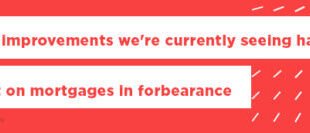
I didn’t serve in the military, but my dad did. For his entire career. He’s 92 now and is saluted when spotted wearing his US Air Force retiree cap or jacket. Like many veterans, my dad appreciates when a stranger approaches him and says, “thank you for your service.” And it makes me proud, too.
Movement Mortgage also appreciates the service of US veterans and active military personnel. We try to show it by offering one of the most beneficial mortgage programs available today: the US Department of Veterans Affairs home loan program, aka the VA loan.
This blog post will give you a high-level look at who’s eligible and what you need to know before applying for a VA loan. Later this month, we’ll run follow-up posts on how frequently you can tap into the benefits of the VA loan, how VA entitlements are calculated and what goes into VA loan closing costs.
Now for the nuts and bolts!
Who is eligible for a VA loan?
Active military, National Guard, reservists and veterans are all eligible to apply for a VA loan. Spouses of military members who’ve died in active duty or due to a service-related injury are also eligible.
Those on active-duty will generally qualify for this loan after six months of service. Members of the US National Guard and reservists must wait for at least six years to be eligible. If called into active duty before that, they can apply for the loan after 181 days of service.
Basics needed to qualify for a VA loan
It should be known that VA loan eligibility doesn’t necessarily translate into loan approval. Even if you are eligible, you still need to meet all lender requirements. Among other things, these can include the following:
Income verification
- A lender will need to know how much you make to ensure you can pay back the home loan. Typically, mortgage underwriters look for consistent earnings, so you’ll be asked to submit W2s or pay stubs for the past few years. This helps the underwriter gauge income stability and your likelihood to stay on top of loan payments.
Debt-to-income ratio
- Lenders look at a borrower’s debt-to-income (DTI) ratio to assess whether you’re someone they want to loan money to. To calculate DTI, they’ll add your current monthly expenses (car payments, recurring credit card charges, internet bills, etc.) to your future monthly expenses related to your new mortgage. Then, they’ll divide that number by your monthly income and multiply by 100. The higher your DTI, the less favorable the terms or interest rate may be. As a benchmark, a DTI of 41% is the standard guideline for VA loans.
A good credit score
- For a 30-year fixed-rate mortgage through the VA loan program, Movement Mortgage requires a minimum credit score of 580.
Other VA loan considerations:
Type of residence
- A home you buy with a VA loan must be your primary residence.
Guarantees
- The VA loan program guarantees 25% of the lender’s potential loss should the borrower default on the loan. This amount, called an entitlement, is what allows for a low-or-no down payment to be acceptable. As of 2020, this guarantee can be as high as $ 127,600.
- Veterans and military members purchasing in more expensive housing markets may have even more VA loan entitlements available.
Tax benefits
- Depending on where you’re looking to live, military borrowers may be eligible for property tax reductions.
Insurance
- Another overlooked benefit is that there is no requirement to take out private mortgage insurance (PMI) with a VA loan, unlike some other low-or-no down payment loans.
Down payment
- With a VA loan, eligible applicants can purchase a new home with 0% down.
Fees
- There are no lender fees when you get a VA loan from Movement Mortgage.
- However, there are mandatory VA loan funding fees, but these can either be rolled into the total mortgage amount or paid out of pocket at closing.
- Here are what VA loan program fees typically look like:
- First-time VA loan applicants:
- If you’re looking for 100% financing (i.e., no down payment), a fee of 2.30% on the total loan amount is charged.
- If you can make a down payment of at least 10%, the fee is 1.40%.
- Second-time VA loan applicants:
- 3.6% of the total loan amount is applied if the applicant still has an active VA loan, and if no down payment is made.
- VA loan applicants receiving disability:
- Funding fees are waived.
- First-time VA loan applicants:
Seller contributions
- It’s perfectly allowable for the seller to show their appreciation by chipping in up to 4% toward closing costs.
Let’s talk about VA loan benefits!
Are you an active-duty or military veteran or family looking to buy, refinance a VA loan or want to learn more about VA homeownership? Movement Mortgage can answer your questions about eligibility and help you make the right decision.
Find a local loan officer in your area to get started.



